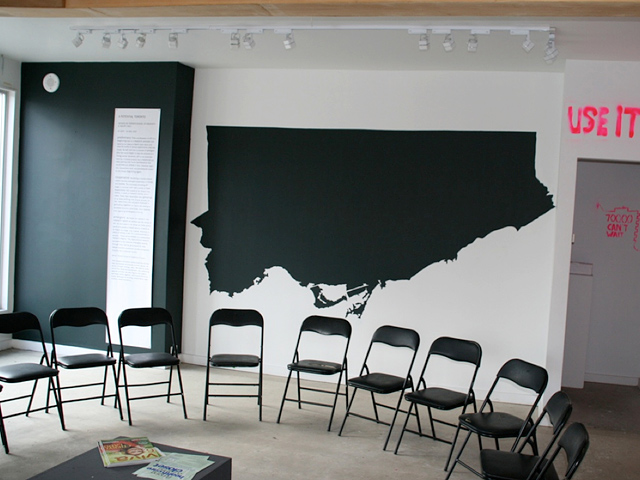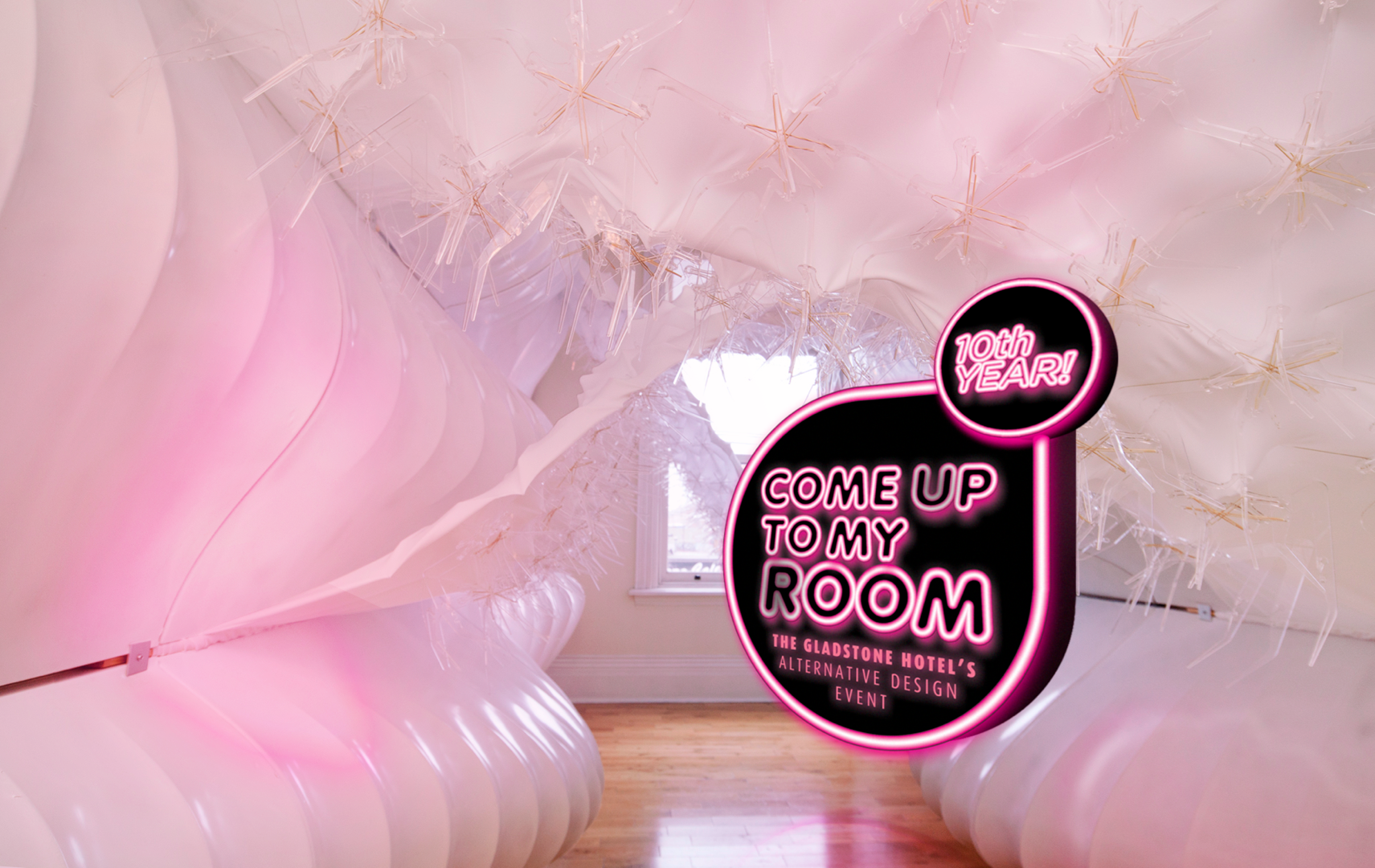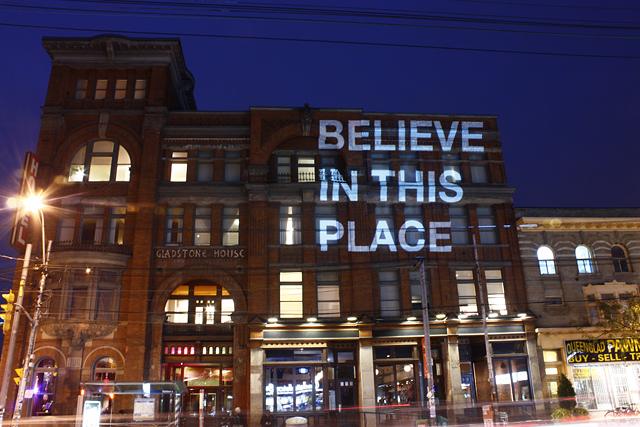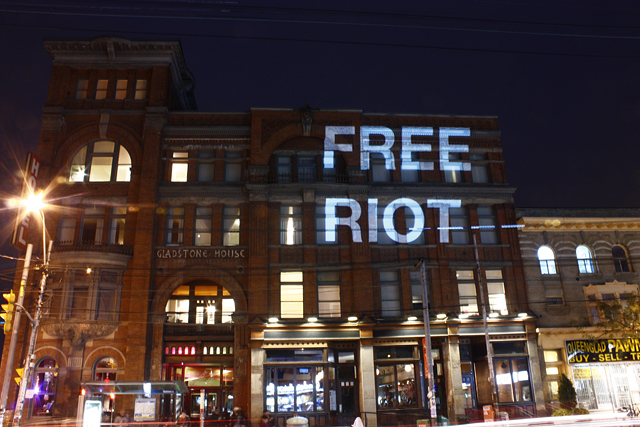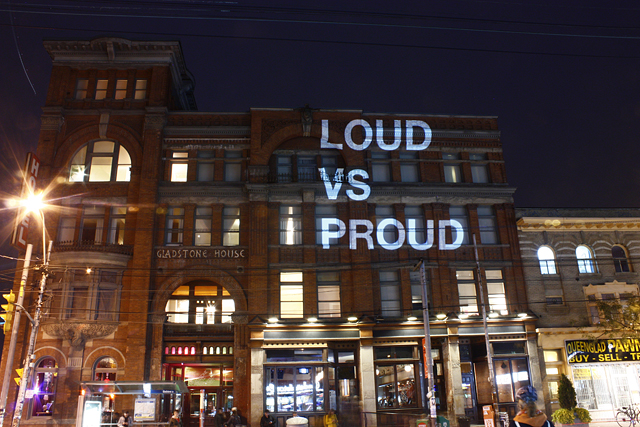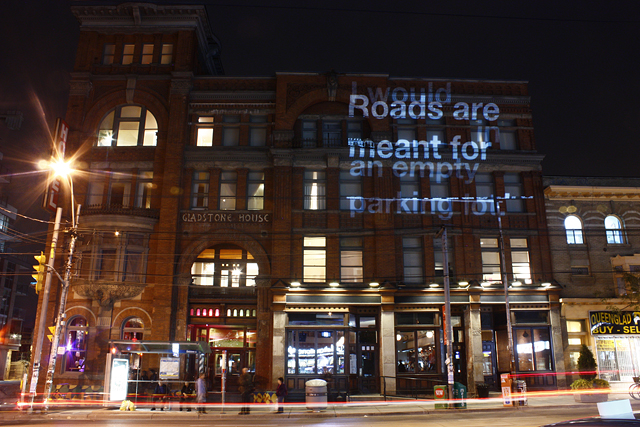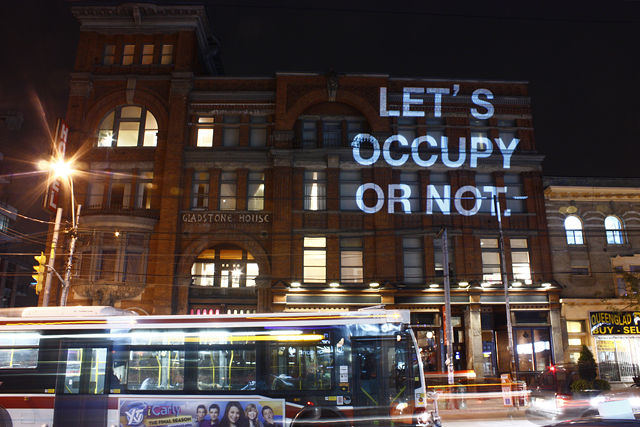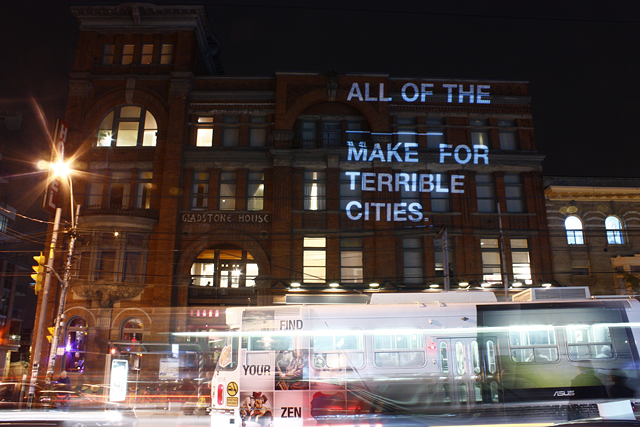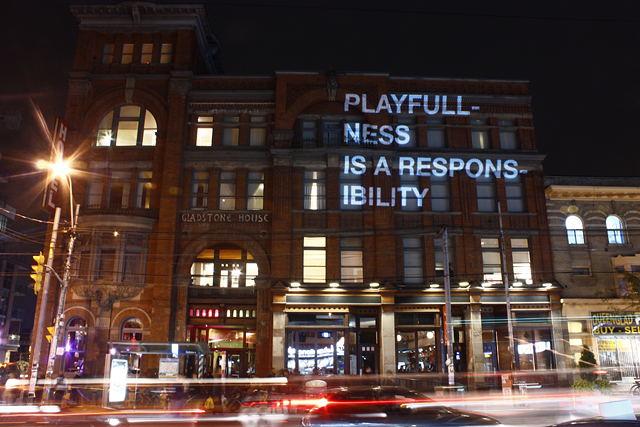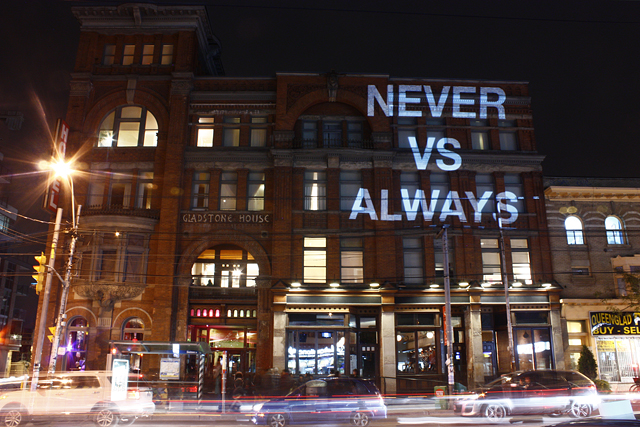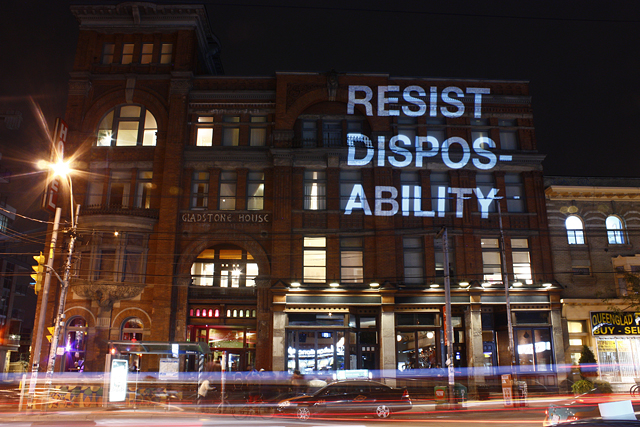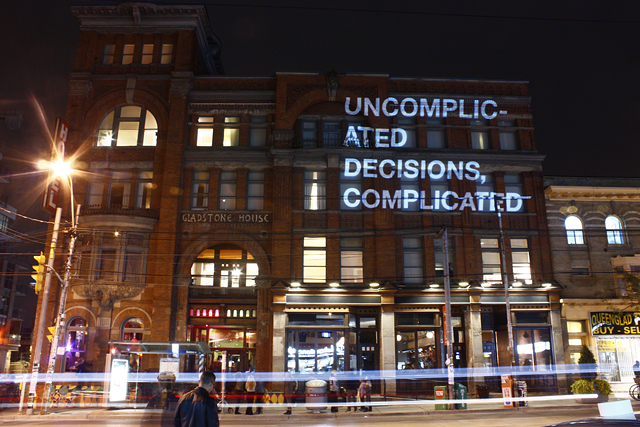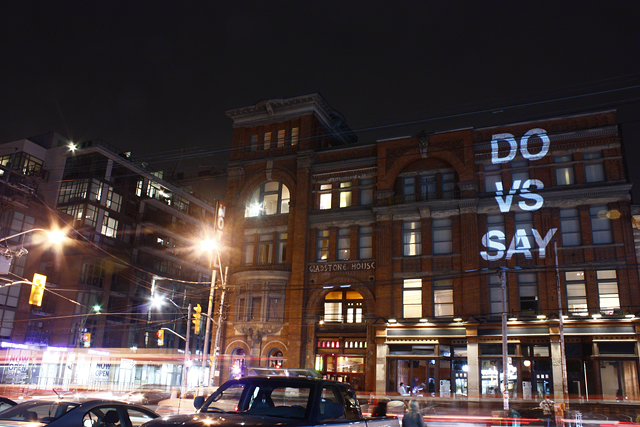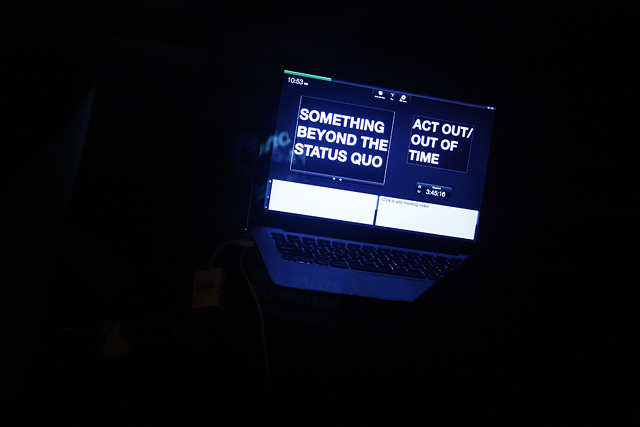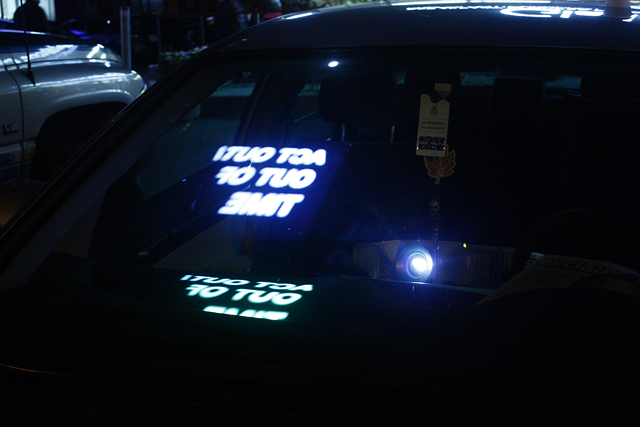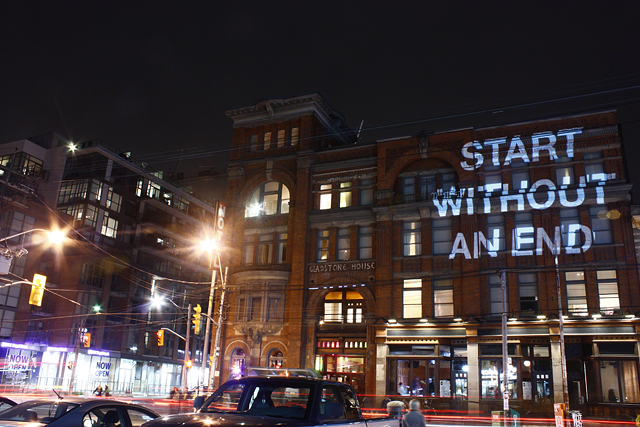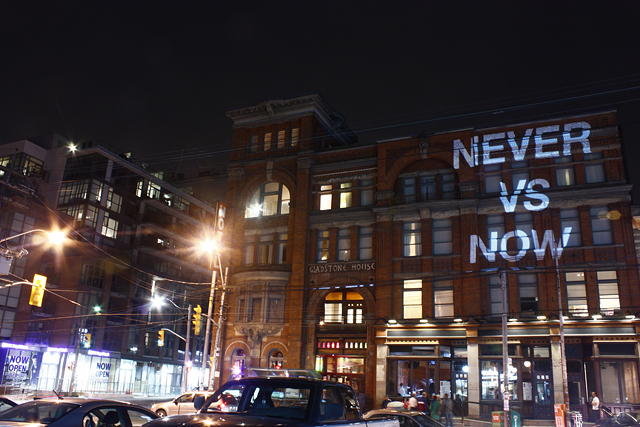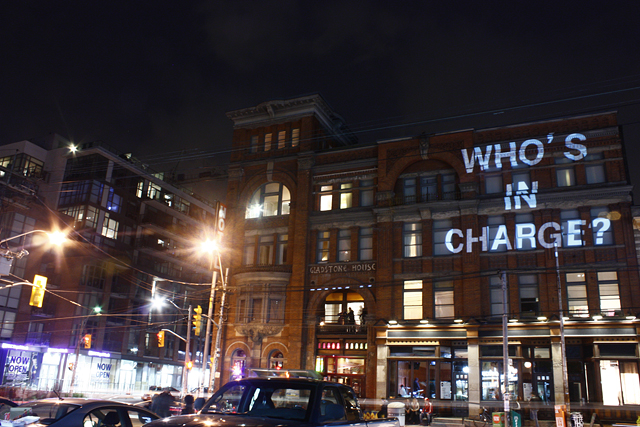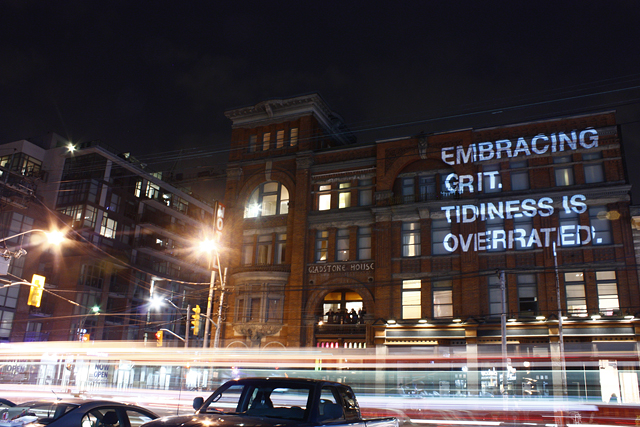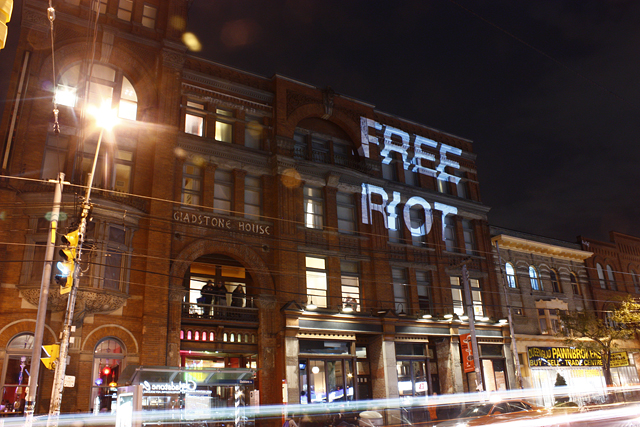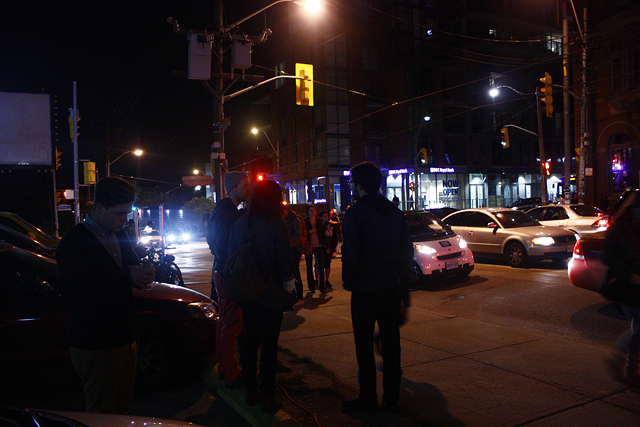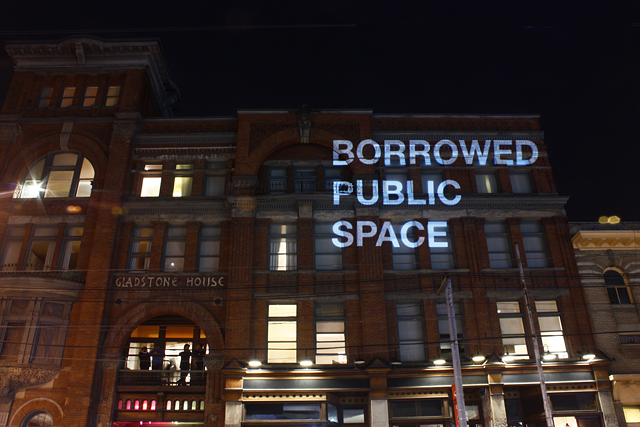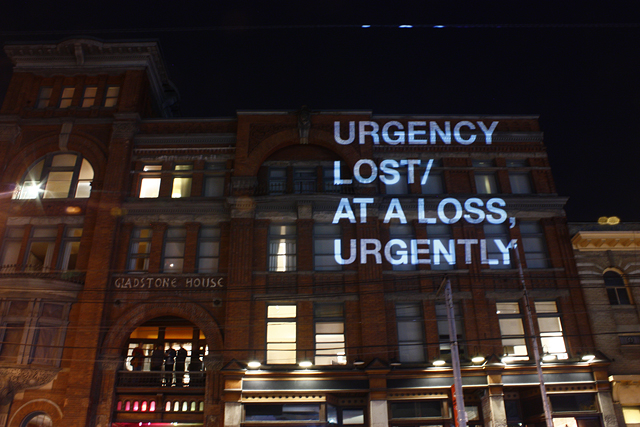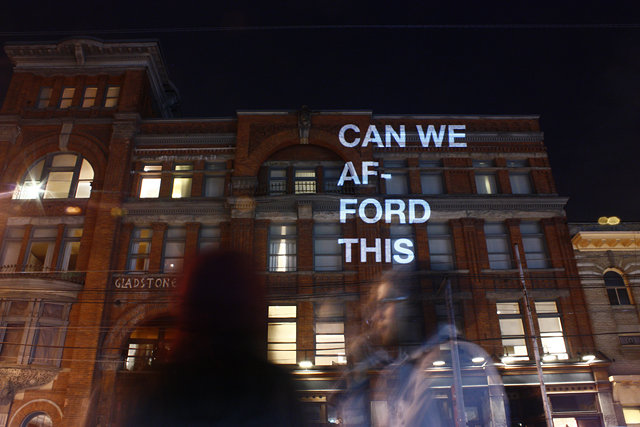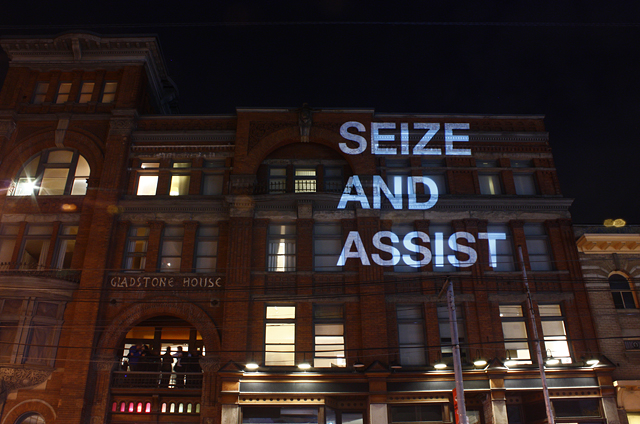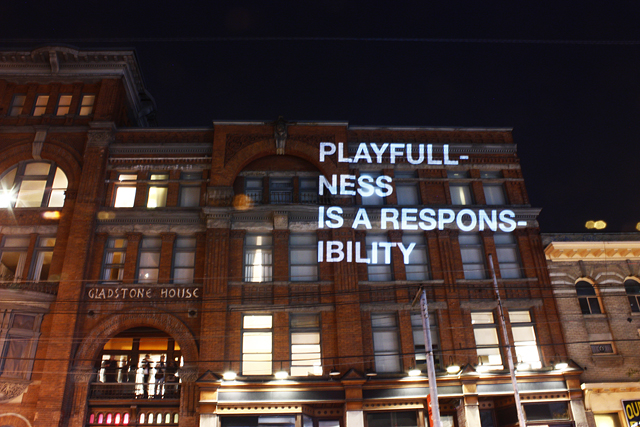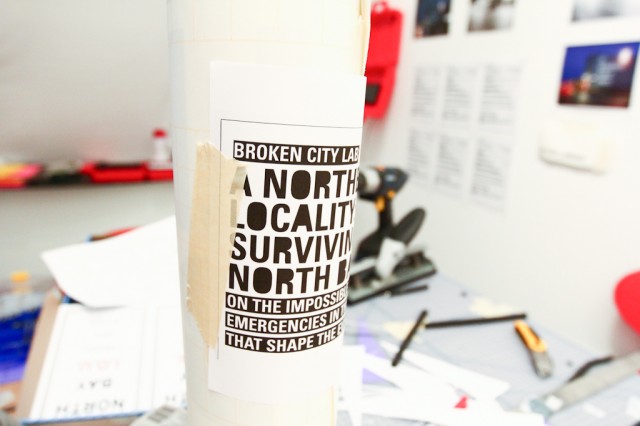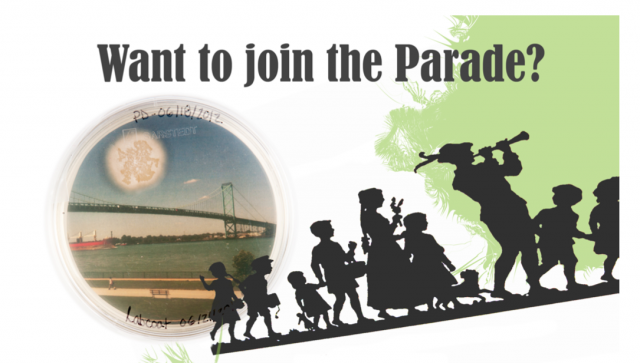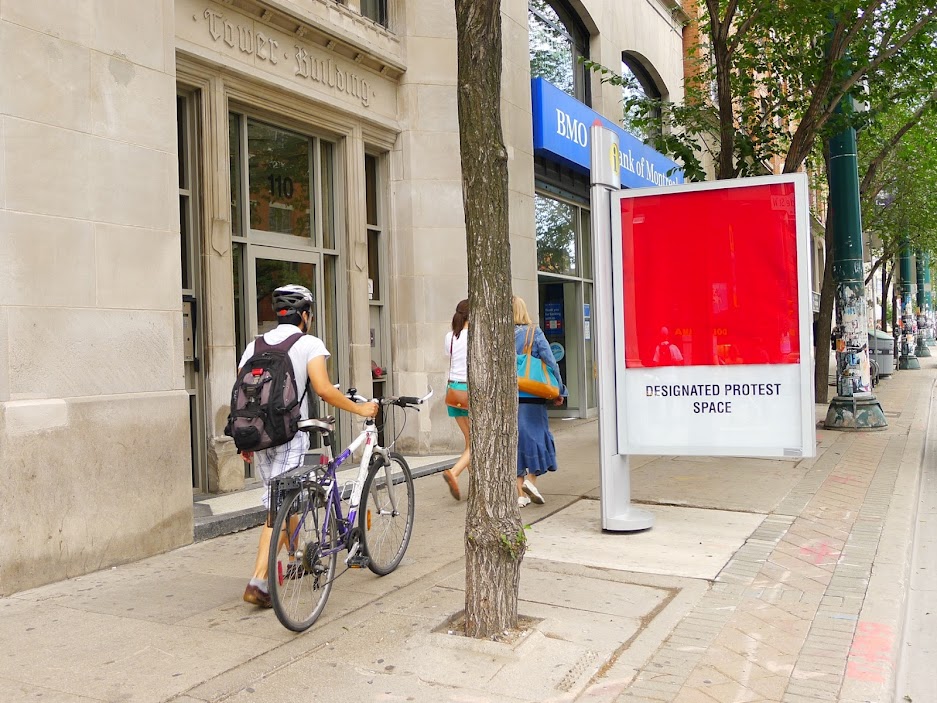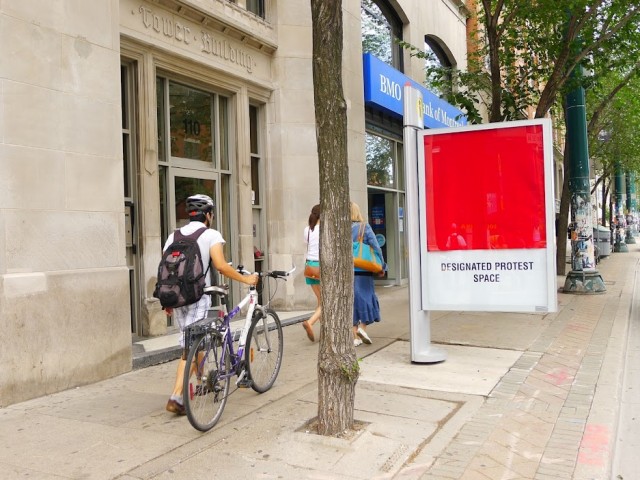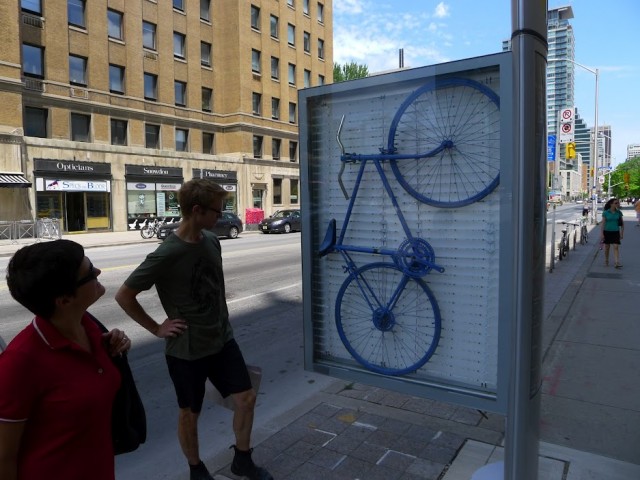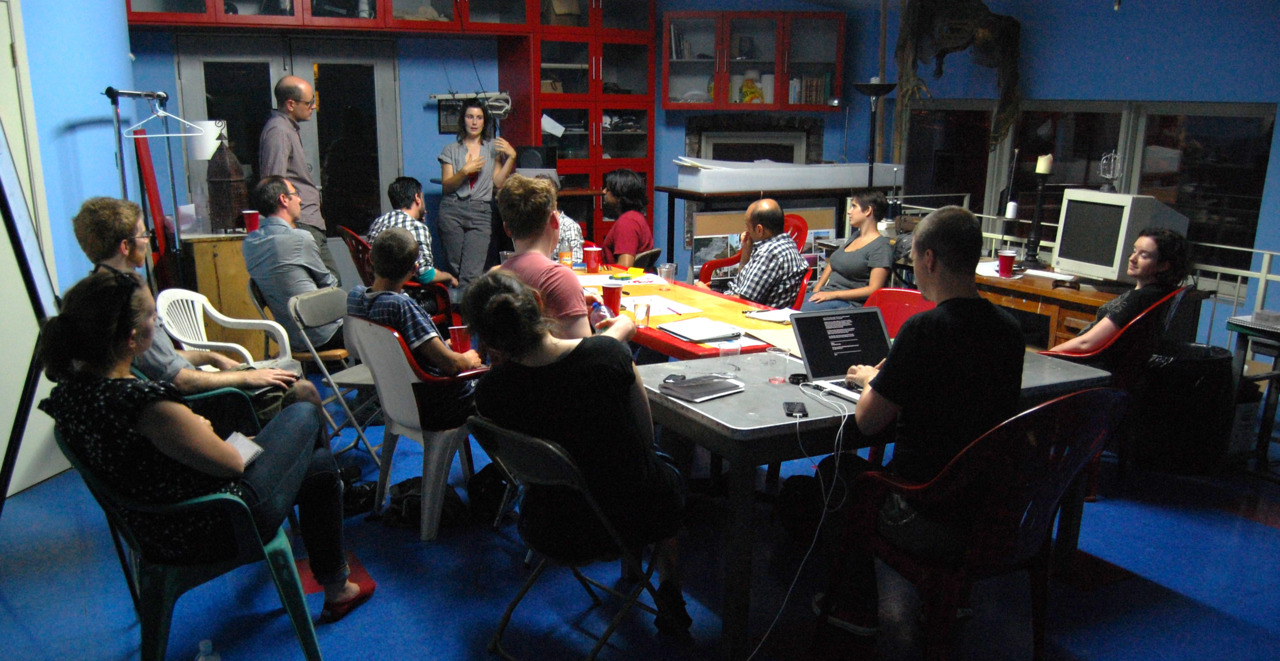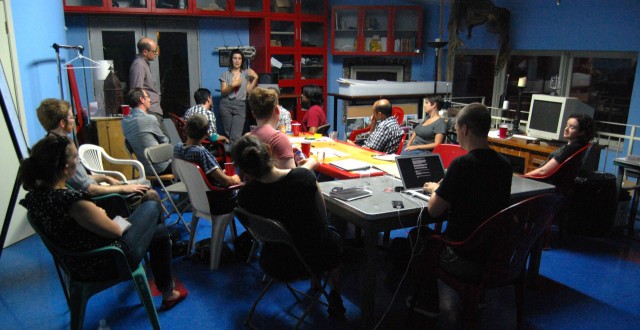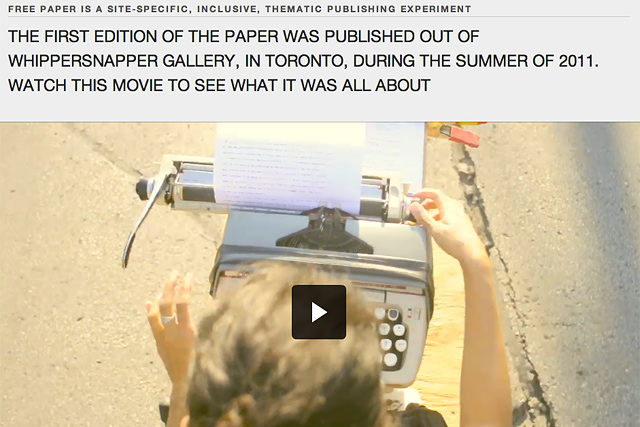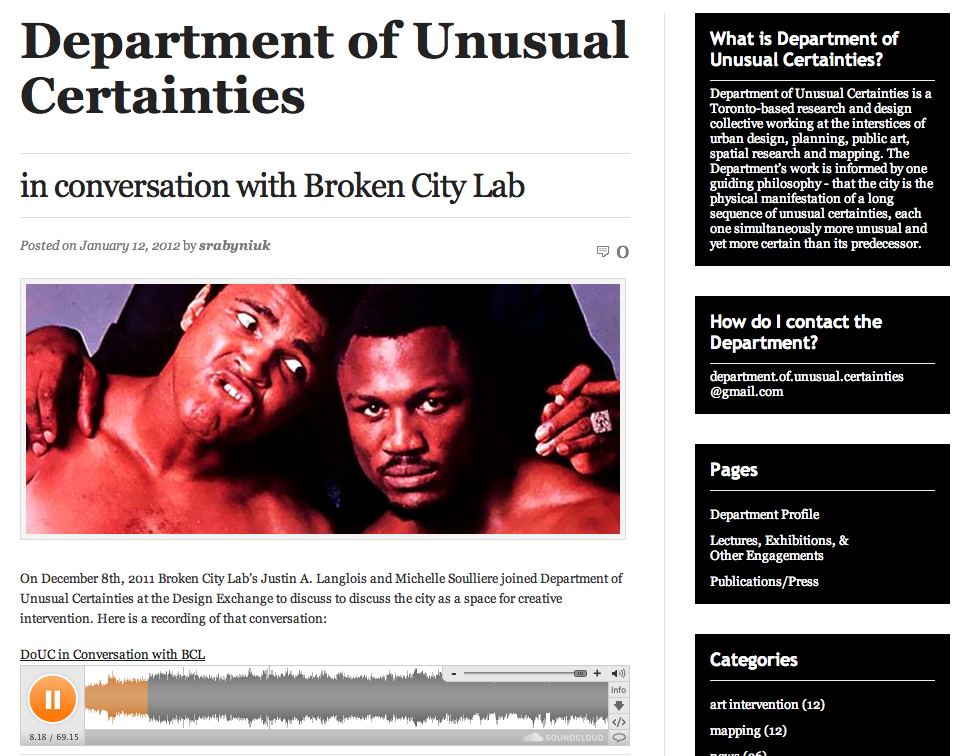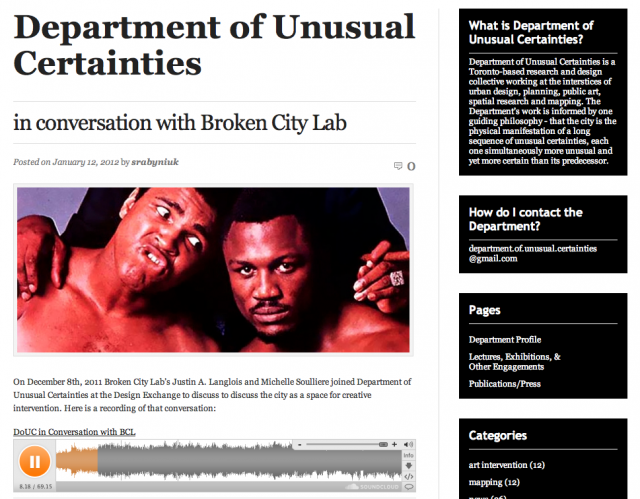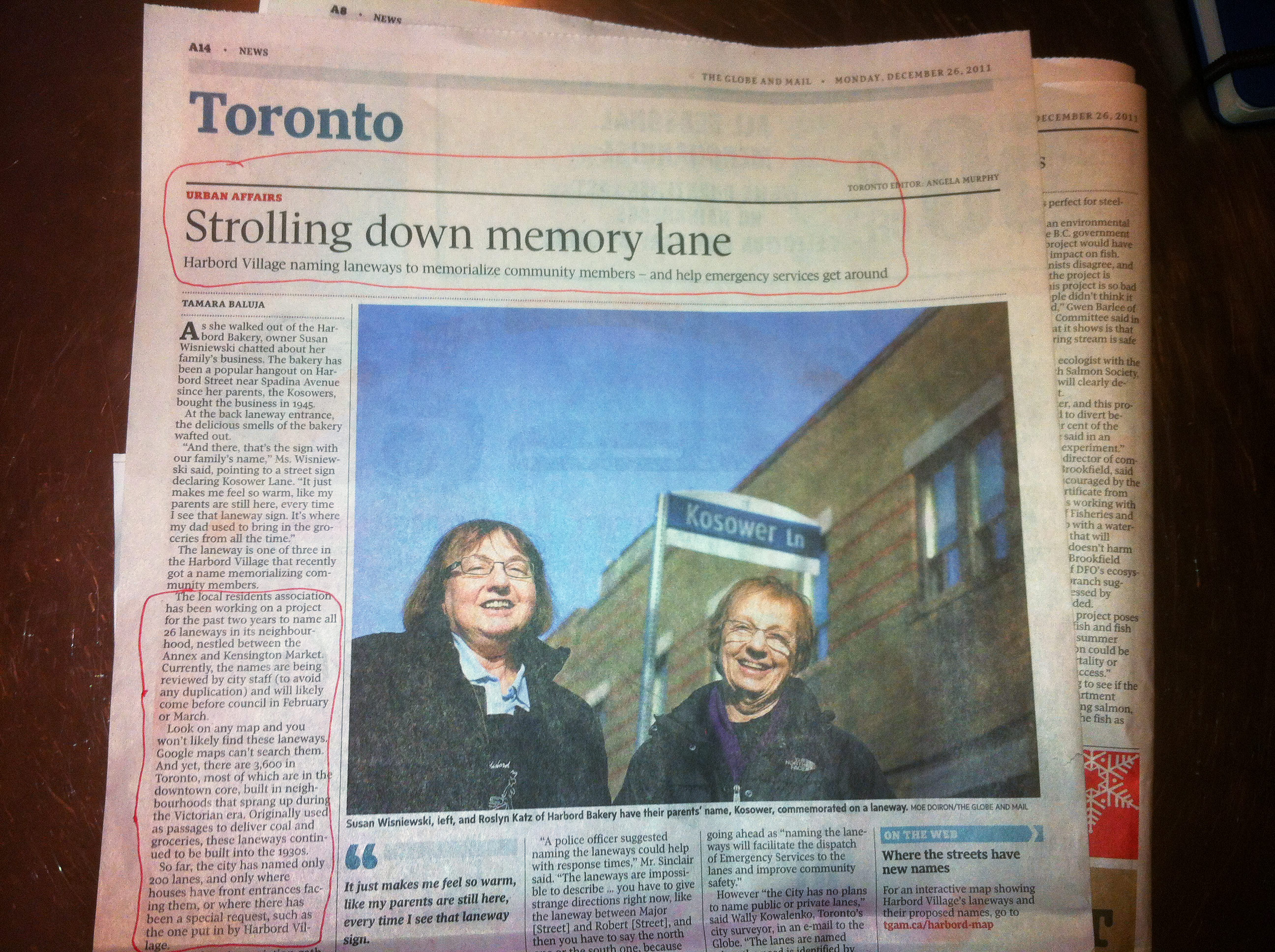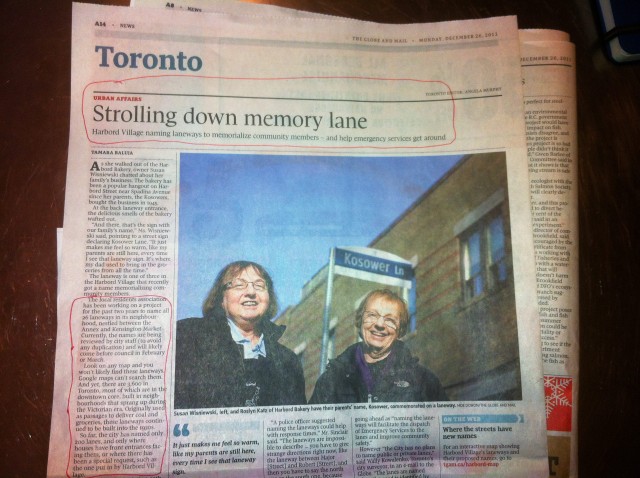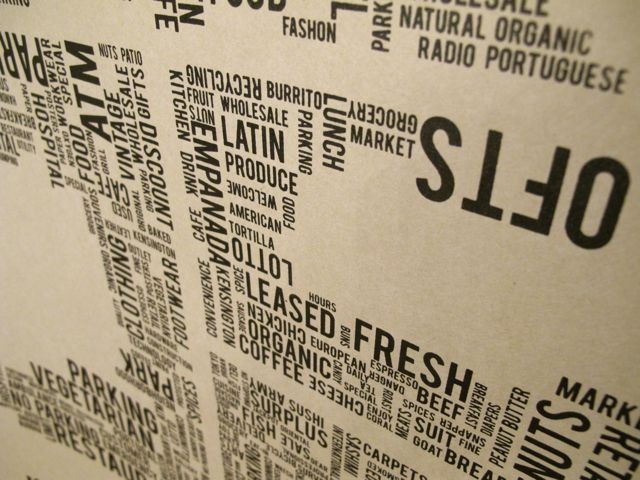Image courtesy of LettersandHandshakes.org
Exit Strategies – Celebrating the launch of TOPIA: Canadian Journal of Cultural Studies (28) “Out of the Ruins, the University to Come,” edited by Bob Hanke and Alison Hearn
Irfan Ali (The Academy of the Impossible) | Maria Alejandrina Coates, Rodrigo Hernandez-Gomez, and Arlan Londoño (Decolonial Aesthetics from the Americas) | Nick Dyer-Witheford (University of Western Ontario) | Sandra Jeppesen (Lakehead University) | Justin Langlois (Broken City Lab) | Maiko Tanaka (The Grand Domestic Revolution)
Sat. April 20, 2013
3:00-5:00pm
Onsite [at] OCAD U
230 Richmond St. West
Toronto, ON
Facebook event page: https://www.facebook.
Accumulation by student debt. Precarization of education workers. Dependence on corporate donations. Emphasis on research commercialization. Intensification of academic managerialism… Neoliberal transformations of the university coincide with growing interest in co-research, free schools, and education-oriented art practice. Bringing together individuals working within and across educational, activist, and artistic fields, Exit Strategies assesses some of the fault lines in universities today—but also links that conversation to a counter-current of experimentation in research, pedagogy, and institution formation occurring at the margins of the university system.
As sites of knowledge production become increasingly enclosed, what new practices of education are unfolding simultaneously in neighbourhoods, in homes, and in classrooms?
How is pedagogical possibility enabled and constrained by the setting in which we teach, learn, and research?
Refusing to romanticize a ‘lost’ university or idealize ‘alternative’ practices, here exit strategies are about evicting neoliberal imperatives from educational institutions; affirming commitments to radical pedagogy, basic research, and critical inquiry that continue to animate the university; constructing autonomous education projects and pursuing disruptive pedagogies that strive to forefront non-capitalist sociality and anti-oppression; amplifying transversal relays across diverse sites for action-oriented research; and sharing insights between those voicing a critique of the university from within and those inventing new institutions and pedagogies from without.
Speakers
Irfan Ali is a writer, educator, and the operations manager of the Academy of the Impossible. The Academy is an open source social enterprise in west-end Toronto that opened in December 2011. Ali works primarily with Impossible Arts, the organization’s arts wing, coordinating and leading writing and art programs for Toronto youth and adults. In just over one year the Academy has become a hub for workshops, events, and groups that focus on innovative educational techniques. Impossible Arts runs four main programs: Toronto Street Writers (a writing group), Sound Poets’ Circle (a hip hop and spoken word workshop), Impossible Words (a literary salon), and Fright Film Academy (a film workshop). Ali’s background is in commerce and education and he has previously worked with organizations such as the Children’s Aid Society of Toronto, Pathways to Education – Regent Park, and the Christie-Ossington Neighbourhood Centre.
Maria Alejandrina Coates, Rodrigo Hernandez-Gomez, and Arlan Londoño are the organizers of Decolonial Aesthetics from the Americas, a multidisciplinary and collaborative symposium for artists and scholars of the Americas and the Caribbean, featuring performances, artist presentations, workshops, online components, and papers. In collaboration with FUSE Magazine, a special issue, to be published in September 2013, will serve as a reader for this event.
Nick Dyer-Witheford is Associate Professor and Associate Dean of the Faculty of Information and Media Studies at University of Western Ontario. He is author of Cyber-Marx: Cycles and Circuits of Struggle in High-Technology Capitalism (University of Illinois, 1999), and co-author, with Stephen Kline and Greig de Peuter, of Digital Play: The Interaction of Technology, Culture, and Marketing (McGill-Queen’s, 2003), and with Greig de Peuter of Games of Empire: Global Capitalism and Video Games (Minneapolis: University of Minnesota Press, 2009). He is currently working on a manuscript provisionally titled The Global Worker and the Digital Front.
Sandra Jeppesen is an Assistant Professor of Media Studies, and the creator of the new Media Studies for Social Change program in the Interdisciplinary Studies Department at Lakehead University in Orillia. With Holly Nazar, she contributed the essay “Beyond Academic Freedom: Canadian Neoliberal Universities in the Global Context” to TOPIA (28).
Justin Langlois is the co-founder and research director of Broken City Lab, and is currently an Assistant Professor in the Faculty of Arts and Social Sciences at the University of Windsor. In the fall, he will join the Faculty of Culture and Community at Emily Carr University of Art and Design.
Maiko Tanaka collaborates on curatorial projects at the intersections of art, pedagogy, and collective action. Since 2010 she’s been working on The Grand Domestic Revolution with Casco (Utrecht) where she co-curated projects with ASK!, a collective of art workers in affinity with domestic workers, Our Autonomous Life?, a cooperatively produced sitcom on the Dutch squatting movement, and Read-in, a nomadic reading group that goes door to door searching for hosts for their reading sessions. During her residency at the Justina M. Barnicke Gallery she organized Extra-curricular, an international conference presenting lectures, workshops and architectures that mobilize radical pedagogical art practices. Currently Maiko writes a column for FUSE on the political economies of public programming and serves as a board member of Gendai.
Acknowledgements
Letters & Handshakes gratefully recognizes support from the Cultural Studies Program, Wilfrid Laurier University | Onsite [at] OCAD U | TOPIA: Canadian Journal of Cultural Studies
